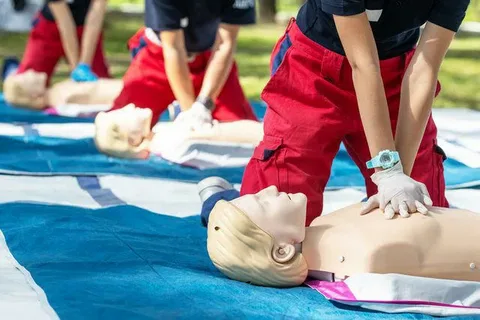In a world full of unpredictability, having the tools to respond in an emergency is invaluable—especially for students. From minor playground injuries to potentially life-threatening incidents, knowing how to respond can make the difference between calm and chaos, life and death. That’s why first aid certification is not just useful—it’s essential for students of all ages.
This guest post explores the multifaceted reasons why students should be equipped with first aid skills and how certification plays a transformative role in education, personal development, and community safety.
1. Empowering Students with Life-Saving Knowledge
One of the most compelling reasons for first aid certification is that it teaches students how to save lives. Whether someone faints in the classroom or suffers an asthma attack during a school trip, students with first aid training can step in before professionals arrive.
Key skills students learn include:
- Performing CPR
- Treating burns, cuts, and sprains
- Assisting with choking
- Managing allergic reactions or seizures
This knowledge isn’t just theoretical—it’s practical and can be the first line of defense in emergencies.
2. Boosting Confidence and Leadership
Students who receive first aid training often gain a strong sense of responsibility and confidence. When they know what to do in a crisis, they are more likely to take initiative instead of freezing or panicking.
This kind of leadership is especially beneficial for:
- Student athletes
- Camp counselors
- Student government leaders
- Peer mentors
Confidence in emergencies can extend into other areas of life, helping students become more self-reliant and socially responsible individuals.
3. Enhancing School Safety and Readiness
Having a student body trained in first aid improves the overall safety of any school environment. Teachers and school staff may not always be immediately available, so trained students can fill in critical gaps.
Examples of real-world impact:
- A trained student may prevent a bleeding wound from becoming fatal.
- First aid-savvy peers may assist a diabetic classmate in distress.
- Students with first aid training are more likely to call for help and stay calm during fire drills or lockdowns.
4. First Aid Certification as a Resume Booster
As students transition to college or the workforce, first aid certification becomes a standout qualification. It shows a sense of preparedness, maturity, and willingness to take responsibility—traits that colleges and employers deeply value.
Certifications are especially attractive for careers in:
- Healthcare
- Education
- Hospitality
- Childcare
- Public safety
Even for part-time jobs like babysitting or lifeguarding, being first aid certified can tip the scales in a student’s favor.
5. Promoting Mental Health Awareness
First aid isn’t just physical—it includes mental health first aid as well. Many certification courses now address how to:
- Recognize signs of anxiety or depression
- Respond to panic attacks
- Offer peer support while seeking professional help
Given the rise in youth mental health challenges, teaching students how to care for themselves and others emotionally is more important than ever.
6. Creating a Culture of Care and Community
First aid training fosters a culture of empathy and care. Students who are trained are more aware of others’ well-being and are often seen helping friends or classmates proactively.
This can lead to:
- More inclusive classrooms
- Reduced bullying
- Greater peer support systems
When students learn how to help others, they begin to value human life more deeply and take action that reflects kindness and responsibility.
7. Legal and Ethical Understanding
First aid certification also teaches students about their legal rights and responsibilities. They learn about:
- The Good Samaritan Law
- When and how to call emergency services
- How to act ethically when providing care
This knowledge ensures students protect themselves legally while acting in the best interest of others.
Conclusion
Incorporating first aid certification into student life is more than just an educational upgrade—it’s an investment in safety, confidence, and compassion. From classrooms to communities, the benefits of having trained students ripple outward in powerful, tangible ways.

